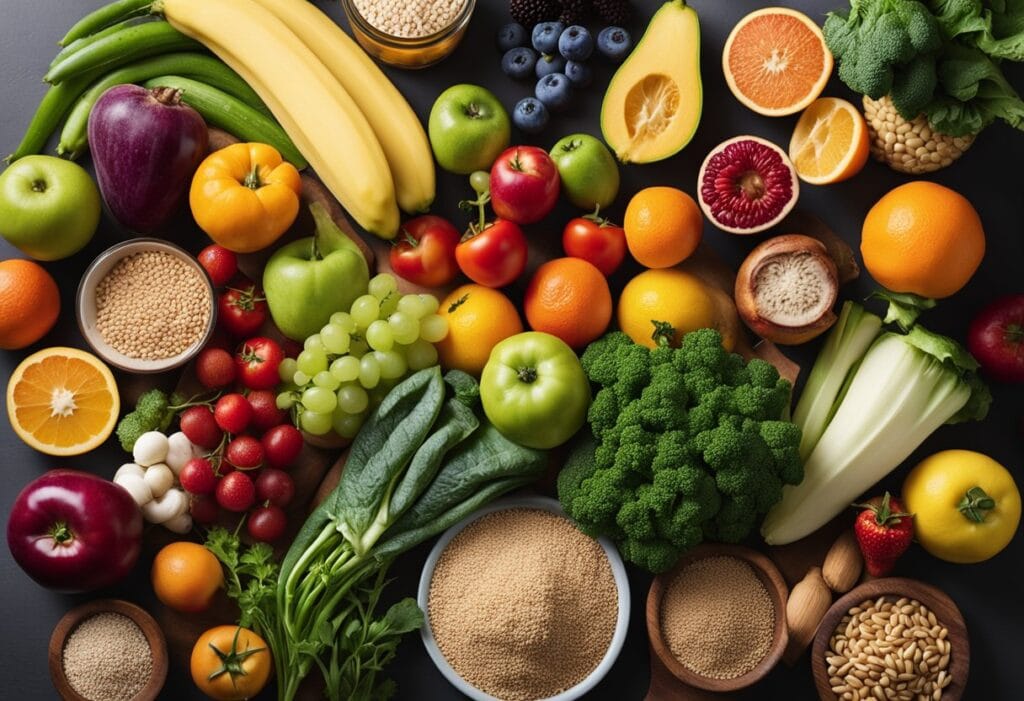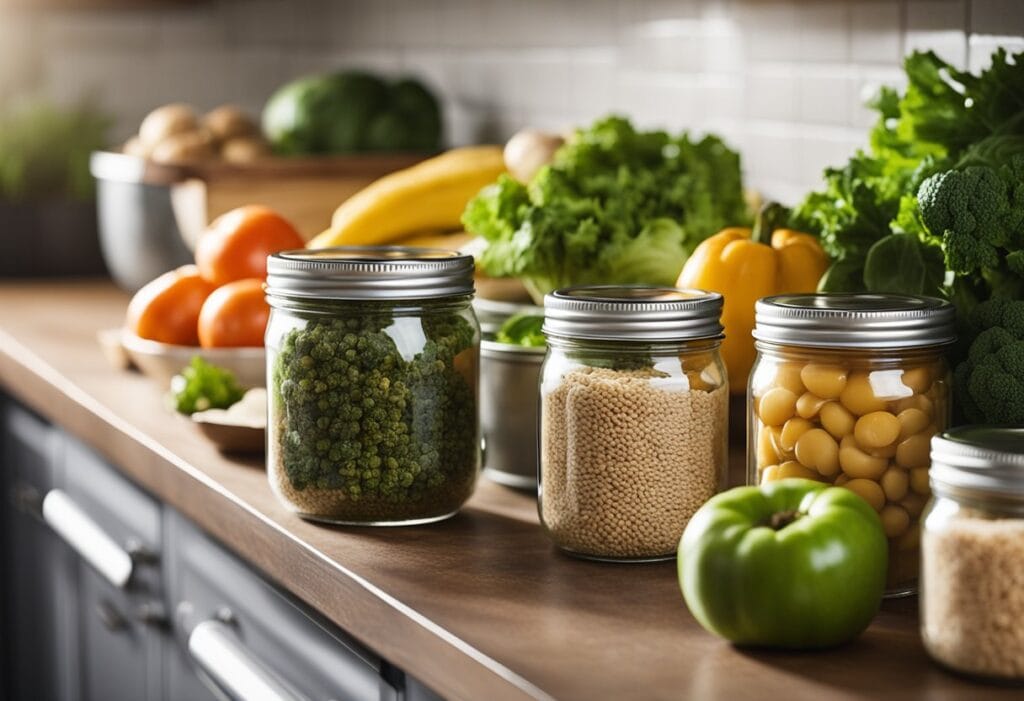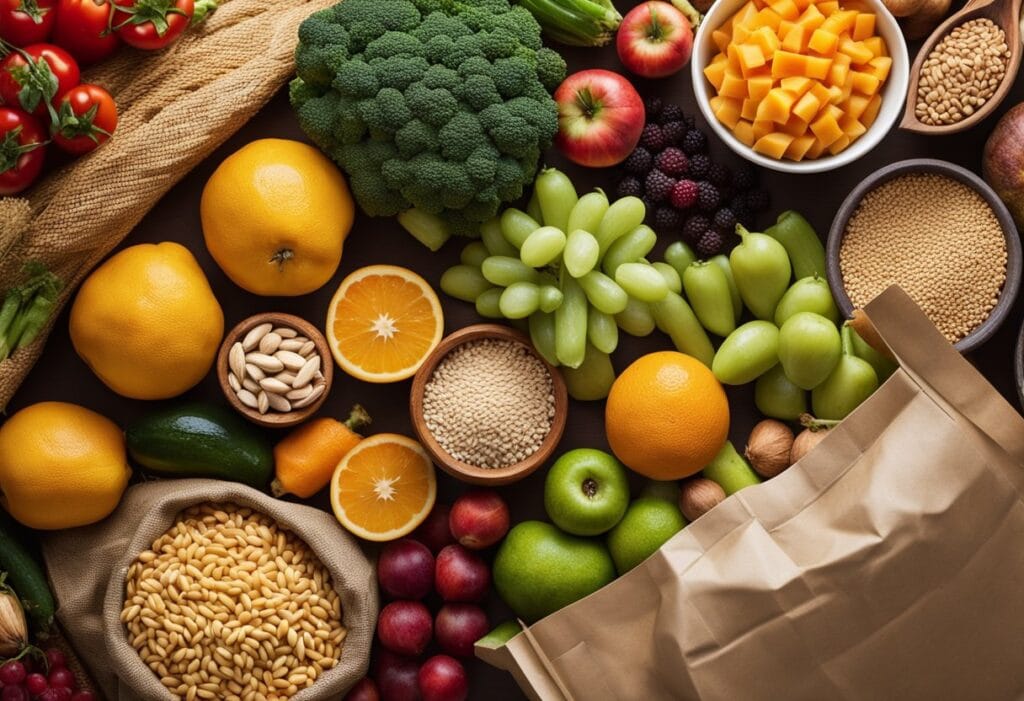Healthy eating on a budget often feels like trying to solve a Rubik’s Cube in the dark—just when you think you’ve got the green side completed, your bank account gently reminds you that avocados are a luxury item. But fear not, culinary cost-cutters and frugal foodies! This blog post is your flashlight in the nutritional abyss, illuminating the path to saving those precious pennies without compromising on the rainbow of nutrients your body craves.
Let’s embark on a gastronomic adventure where wallet-friendly meets waist-friendly, and where the only thing we’re skimping on is the price tag. From the art of coupon combat to the secrets of seasonal shopping, we’re about to dive deep into the world of savvy sustenance. So, tighten your apron strings and loosen your budget belts; it’s time to master the menu of healthy eating on a budget.
Healthy eating on a budget can seem like a daunting task, but it’s certainly achievable with a little bit of planning and effort. Eating healthy doesn’t have to cost a fortune, and it’s important to remember that investing in nutritious meals is an investment in our health and well-being.

Planning your meals is a crucial step in eating healthy on a budget. By taking the time to plan out your meals for the week, you can avoid the temptation of impulse purchases and ensure that you’re buying only what you need. This can also help you save money by buying in bulk and taking advantage of sales. By planning your meals, you can also focus on creating a balanced diet that includes all the necessary nutrients.
Smart shopping strategies are also essential for eating healthy on a budget. This includes shopping for fresh produce in season, buying generic brands, and avoiding pre-packaged and processed foods. Shopping at local farmers markets can also be a great way to find fresh, affordable produce. Additionally, focusing on buying nutritious foods like whole grains, lean proteins, and fresh fruits and vegetables can help you create healthy meals without breaking the bank.
Overview on Healthy Eating on a Budget
Key Takeaways
- Planning your meals is a crucial step in eating healthy on a budget.
- Smart shopping strategies can help you save money while still buying nutritious foods.
- Focusing on nutritious foods and avoiding pre-packaged and processed foods can help you create healthy meals without breaking the bank.
Planning Your Meals
When it comes to eating healthy on a budget, planning your meals is crucial. Not only does it help you make healthier choices, but it also helps you save money by reducing food waste and avoiding impulse purchases. Here are some tips to help you plan your meals effectively:
Creating a Grocery List
Before you head to the grocery store, take some time to create a grocery list. This will help you stay on track and avoid buying unnecessary items. Start by planning out your meals for the week and making a list of the ingredients you’ll need. Be sure to check your pantry and fridge to see what you already have on hand. This will help you avoid buying duplicates and wasting money.
When creating your grocery list, focus on buying whole foods such as fruits, vegetables, whole grains, and lean proteins. These foods are often less expensive than processed and packaged foods and are also more nutritious. Don’t forget to include healthy snacks such as nuts, seeds, and fresh fruit.
Understanding Sales and Discounts
Another way to save money on groceries is to take advantage of sales and discounts. Many grocery stores offer weekly sales on certain items, so be sure to check the store’s weekly ad before you shop. You can also sign up for the store’s loyalty program to receive additional discounts and coupons.
When shopping for produce, try to buy fruits and vegetables that are in season. These items are often less expensive and taste better than out-of-season produce. You can also look for discounted produce that is slightly bruised or overripe. These items are still nutritious and can be used in soups, stews, and smoothies.
By creating a grocery list and understanding sales and discounts, we can plan our meals effectively and save money on groceries.
Smart Shopping Strategies
When it comes to healthy eating on a budget, shopping smart is key. Here are some strategies to help you make the most of your grocery budget:
Buying in Bulk
Buying in bulk can be a great way to save money on pantry staples like rice, beans, and oats. Look for bulk bins at your grocery store or consider joining a bulk-buying club. Just be sure to check the unit price to make sure you’re actually getting a good deal.
Choosing Generic Brands
Generic or store brands are often just as good as name-brand products, but cost less. When shopping, compare the ingredients and nutrition information on the label to make sure you’re getting a good value. You might be surprised at how much you can save by choosing generic brands.
Using Coupons Wisely
Coupons can be a great way to save money on groceries, but only if you use them wisely. Don’t buy something just because you have a coupon for it. Instead, look for coupons for items you already planned to purchase. Also, be sure to check the expiration date and any restrictions on the coupon before you use it.
By following these smart shopping strategies, we can purchase budget-friendly foods and still eat healthy.
Focusing on Nutritious Foods

When it comes to healthy eating on a budget, it’s important to focus on nutrient-dense foods that provide the most bang for your buck. Here are some tips for incorporating nutritious foods into your diet without breaking the bank.
Incorporating Whole Grains
Whole grains are an excellent source of fiber, B vitamins, and minerals. They’re also more filling than refined grains, which means you’ll be less likely to overeat. Some affordable whole grain options include brown rice, quinoa, oats, and whole wheat pasta. Try using these grains as a base for your meals and adding vegetables and protein for a well-rounded and budget-friendly dish.
Selecting Affordable Proteins
Protein is an essential nutrient that helps build and repair tissues in the body. While meat can be expensive, there are many affordable protein sources that can be incorporated into your diet. Eggs, canned fish, and legumes such as beans and lentils are all great sources of protein that won’t break the bank. Plant-based proteins like tofu and tempeh are also highly nutritious and generally more affordable than meat and fish.
Adding Fruits and Vegetables
Fruits and vegetables are packed with vitamins, minerals, and fiber, making them an important part of a healthy diet. While fresh produce can be expensive, there are ways to save money while still incorporating these foods into your meals. Buy fruits and vegetables that are in season, as they tend to be less expensive. Frozen fruits and vegetables are also a great option, as they’re often more affordable and can be stored for longer periods of time.
Incorporating whole grains, selecting affordable proteins, and adding fruits and vegetables to your diet are all great ways to eat healthy on a budget. By focusing on nutrient-dense foods and making smart choices at the grocery store, we can ensure that we’re getting the nutrients we need without overspending.
Cooking and Storing Tips

When it comes to healthy eating on a budget, cooking your meals at home is one of the most effective ways to save money. Not only is it cheaper than eating out, but it also gives us full control over what we eat and how much we eat. Here are some tips for preparing meals at home:
Preparing Meals at Home
- Plan your meals ahead of time: Meal planning is a great way to save money at the store. Pick one day each week and plan your meals for the upcoming week. Then, make a list of the ingredients you need and stick to it when you go shopping.
- Cook in bulk: Cooking in bulk can save you time and money. You can freeze leftovers for later or use them for lunch the next day.
- Use frozen fruits and vegetables: Frozen produce is often cheaper than fresh, and it can be just as nutritious. Plus, it lasts longer in the freezer, so you can stock up when it’s on sale.
- Use a slow cooker: Slow cookers are a great way to save time and money. You can cook large batches of food at once, and the slow cooking process helps to tenderize cheaper cuts of meat.
Managing Leftovers
Managing leftovers is another important aspect of healthy eating on a budget. Here are some tips for managing leftovers:
- Store leftovers in the fridge or freezer: Leftovers can be stored in the fridge for up to four days or in the freezer for up to three months.
- Label and date your leftovers: This will help you keep track of what you have and when it was made.
- Store leftovers in individual portions: This makes it easier to grab a quick meal when you’re in a hurry.
Reducing Food Waste
Reducing food waste is not only good for the environment, but it can also save you money. Here are some tips for reducing food waste:
- Use up leftovers: Leftovers can be used in a variety of ways, such as in soups, stews, and casseroles.
- Use all parts of fruits and vegetables: Many parts of fruits and vegetables that we often throw away are actually edible, such as broccoli stems and carrot tops.
- Freeze produce before it goes bad: If you have produce that is about to go bad, freeze it to use later in smoothies or soups.
By following these cooking and storing tips, we can save money while still eating healthy and delicious meals at home.
Healthy Eating Habits

When it comes to healthy eating, there are a variety of habits we can adopt to make sure we are getting the nutrients we need without breaking the bank. Here are a few key habits to keep in mind:
Avoiding Processed Foods
One of the most important habits we can adopt is to avoid processed foods as much as possible. Not only are these foods often high in sodium and saturated fat, but they can also be more expensive than whole foods. Instead, we should focus on eating a variety of whole foods, such as fruits, vegetables, whole grains, and lean proteins.
Embracing Variety and Moderation
Another important habit is to embrace variety and moderation in our diets. This means incorporating a wide range of foods into our meals to ensure we are getting a diverse array of nutrients. It also means practicing moderation when it comes to portion sizes and indulgences. By balancing our diets in this way, we can ensure we are getting the nutrients we need without overloading on any one thing.
Growing Your Own Food
Finally, one way to save money and ensure we are eating healthy is to grow our own food. This can be as simple as starting a small herb garden in our kitchen or as complex as cultivating a full vegetable garden in our backyard. By growing our own food, we can ensure that it is fresh, organic, and free of harmful chemicals. Plus, it can be a fun and rewarding hobby that also benefits the environment.
By adopting these healthy eating habits, we can ensure that we are getting the nutrients we need without breaking the bank. Whether we are avoiding processed foods, embracing variety and moderation, or growing our own food, there are plenty of ways to eat healthy on a budget.










